 loading
loading
featuresFirst-person stories: in the colleges"The first week was filled with lots of upperclassmen coming to try to sign us up for the laundry service, and who knows what else—but mostly just eager to look us over." 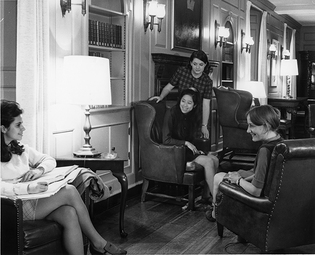 Manuscript and ArchivesMany of the photos in this issue are public-relations shots from the first year of coeducation found in Yale’s archives. Like most of them, this one does not identify the students, but merely says “female students sitting in a common room,” 1969–70. View full imageThese stories were written by women responding to our request for memories of their experiences as the first female undergrads at Yale. See other stories on these topics: Gratitude, Yale Administration, In the Classroom, May Day, and Yale Men. You’ll see that some writers’ names are asterisked. These women submitted their stories also to the Written History Project, founded by the 50th Anniversary Committee so that all alumnae of the time can contribute to the history of coeducation at Yale College. (There’s also an Oral History Project and an Archives Project.) And finally: we invite all readers to send their letters and reactions—including stories of their own experiences of breaking boundaries at Yale—to editor@yalealumnimagazine.com. ___________________________________________ 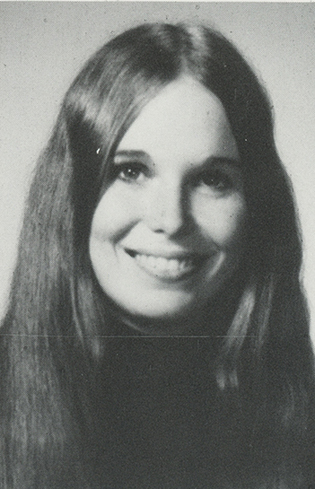 View full imageLupi Phillips Robinson ’71 On move-in day, my younger but bigger and stronger sister came to help me carry boxes up the stairs. I was dressed for the job in jeans and a sweater. On our very first trip up to the third floor, we encountered a classmate headed down. She was petite and gorgeous, with impeccable makeup and dressed in a cream-colored, short-sleeved linen pants suit. A gold snake bracelet curled up her beautifully tanned arm. We made it up to my suite. I closed the door and leaned against it, saying to my sister, “I can’t do this.” With the wisdom of her 17 years, she replied, “Don’t worry. They won’t all be like that.” She was right.
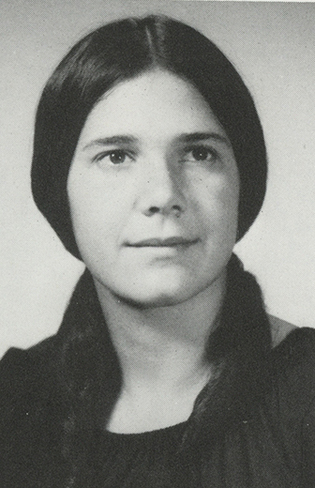 View full imageSusan Ellen Waisbren ’71* My plane deposited my suitcase and me at Kennedy Airport that fall evening in 1969. I was one of the first women transfer students, after spending two years at the University of Wisconsin, Madison. The New Haven limousine left me at the locked gate in front of Davenport, with its gothic walls, turrets, and wide moat separating the college from the city street. A guard finally opened the gate and gave me a key to a first-floor room. No one crossed the courtyard or greeted me in my room. My battered camp trunk stood locked and upright, unsentimental as a palace guard. Tired from the travels, I made my bed in the lower bunk and stretched out—with my scissors under my pillow, just in case. For some reason, I was convinced there were alligators in the moat, and I wanted to be prepared! The next day I met my three roommates. We represented the contingent of Jewish transfer students at Davenport. The only African American female in Davenport roomed with the one other Jewish girl. We noticed but didn’t think much of it. Many of the school buildings did not have “ladies’ rooms,” and there was no gynecologist at Yale Student Health Services.
Julia Preston ’73 (graduated ’76) In the first weeks after we arrived on the Yale campus, we learned of serious concern in the administration that there were few, if any, bathtubs in Vanderbilt Hall, where the freshwomen were housed. Work crews had not had sufficient time to fully coeducate the plumbing. The leadership was apparently worried that our bodies were harboring yeasts and fungi that had been unknown at Yale when the undergraduates were all men, and which could only be controlled by immersive soaking. Those of us who came from boarding schools—there were quite a few in that first freshwoman class—had by that time been managing our personal hygiene in showers for several years, with no ill effects on our health or the public’s. After a month or two, when it became clear the women were as well washed as college students could reasonably be and not beset with female infections, the bathtub issue receded.
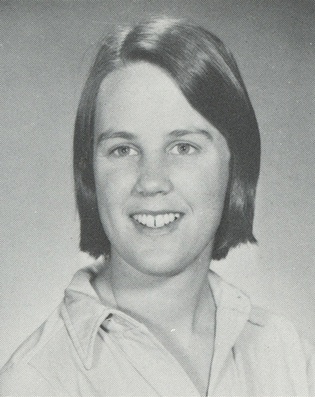 View full imageLouisa Smith Mygatt ’73* My first memory of my years at Yale is pulling into the semicircular driveway of Vanderbilt Hall by myself, with a load of stuff in the car, and seeing no one to help carry it all up to the fourth floor. I sought out help in a nearby entry and lucked into finding someone who eventually became my one longtime friend from Yale. At some point after we all arrived, the gates out to Chapel Street were locked, and you could only get in and out of Vanderbilt by going past the friendly Irish guards. I think unescorted guys had to check in with those guards, and the guard then called the room to see if it was OK for the guy to come up. The first week was filled with lots of upperclassmen coming to Vanderbilt to try to sign us up for the laundry service, and who knows what else—but mostly just eager to look us over. One of my biggest challenges was finding roommates; there just weren't enough in our class in each residential college to choose from. After freshman year, I never roomed with anyone in my class.
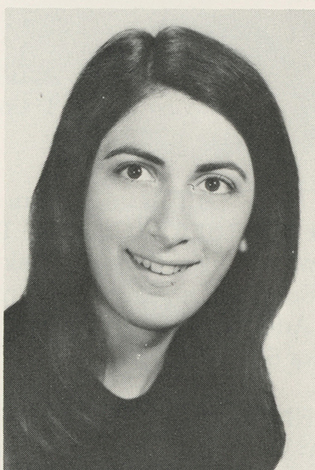 View full imageSarah Shapiro '72 My roommate and I shared the smallest room known to mankind, basically a closet, meant for visiting scholars to stay in overnight, perhaps. We were in Byers Hall, not meant as a residential space for students. It turned out we were the only two girls arriving in Silliman who had not specified the type of room, amount of closet space, type of bed, whatever.
Linda Rae Benjamin ’72 I transferred in from Smith in 1970 and graduated in 1972. I was a married student with one child at that point and had a second by the time I graduated. I lived off campus but was affiliated with Berkeley College. Life was frantic, fun, and challenging. I never got very involved in college activities but am proud to have been there in those exciting times.
Kathleen Virginia “Kit” McClure ’73 (graduated ’75) Freshman year I lived in Vanderbilt with friendly and sensible roommates. I felt that they were much more mature than me, and they did their best to encourage me to calm down and focus on being a college student. I moved off campus by sophomore year. I had joined a feminist rock-jazz band with friends I made in the New Haven women’s liberation movement, and I lived in various women’s collectives with them. My new roommates and bandmates were mostly older and more experienced than myself. I benefited greatly from the day-to-day contact with them, from their personal/political/humanist ideas and actions. Some were deeply involved with the abortion rights struggle, the New Haven Black Panther Party, the Gay Liberation Movement, the study of Marxism-Leninism. I learned so much.
Margaret Scott ’73 During my junior year in high school, I went with my dad to visit colleges in California and had been attracted to Mills College (an all-women university), but my high school English teacher urged me to apply to Yale and Princeton, which in 1969 were enrolling their first women students. I was accepted to Yale and felt obliged to go. I arrived at Yale lugging a very heavy typewriter and one suitcase. My first impression of the East Coast was that people were decidedly unfriendly, compared to Arizona, where I had lived all my life. It was the first time I had ever owned a winter coat or boots. Unused to walking in snow, I had not allowed myself enough time between two early morning classes, so I had the embarrassment of always arriving late to the second one which was located up a steep and icy hill. I soon got used to being at Yale and enjoyed two wonderful roommates my freshman year.
Victoria Morgan Amon ’73 The experience of living in Yale’s magnificent residential colleges was extraordinary and has influenced my taste in architecture ever since. For me, it was history come alive. Indeed, one of the reasons my husband and I purchased what became our family home was that its Tudor style reminded us of Yale. I have many fond memories of long dinners discussing current events, politics and life in general. The food was generally superb and varied (especially considering that hundreds were served at each meal), and it was great fun to go to other residential college dining halls on dates—just like eating out at a fancy restaurant! The staff also was wonderful; I got to know many of the kind people working there, and all were welcoming and friendly.
Leslie Wolowitz ’72 Since I didn’t want to be obnoxious about going to Yale (very prestigious and smart), I would tell people that I went to college in New Haven. Then I realized it was something to be very proud of and also that I was in the first group of women accepted. The funny part: I just saw the movie Booksmart, directed by Olivia Wilde. One of the main characters is a senior who was accepted to Yale. In one scene she is speaking with her high school principal, and she says she is going to New Haven. He yells at her and tells her, “Just say you are going to Yale.” My father was bragging once that I was going to Yale, and the person he was speaking with said, “What is she in for?” I guess he heard “jail.”
The comment period has expired.
|
|